Disclaimer: This blog post contains affiliate links. If you make a purchase through these links, I may earn a small commission at no additional cost to you. Learn More. Thank you for supporting our garden community.
The Quick and Easy Way to STOP Blossom End Rot
You walk into the garden and see it: dark, sunken spots on the bottom of your tomatoes or peppers. It’s disappointing, frustrating, and way too common. If you’ve been hit with blossom end rot, you’re not alone, and the good news is, you can fix it. In this guide, we’ll cover everything to know about fixing blossom end rot.
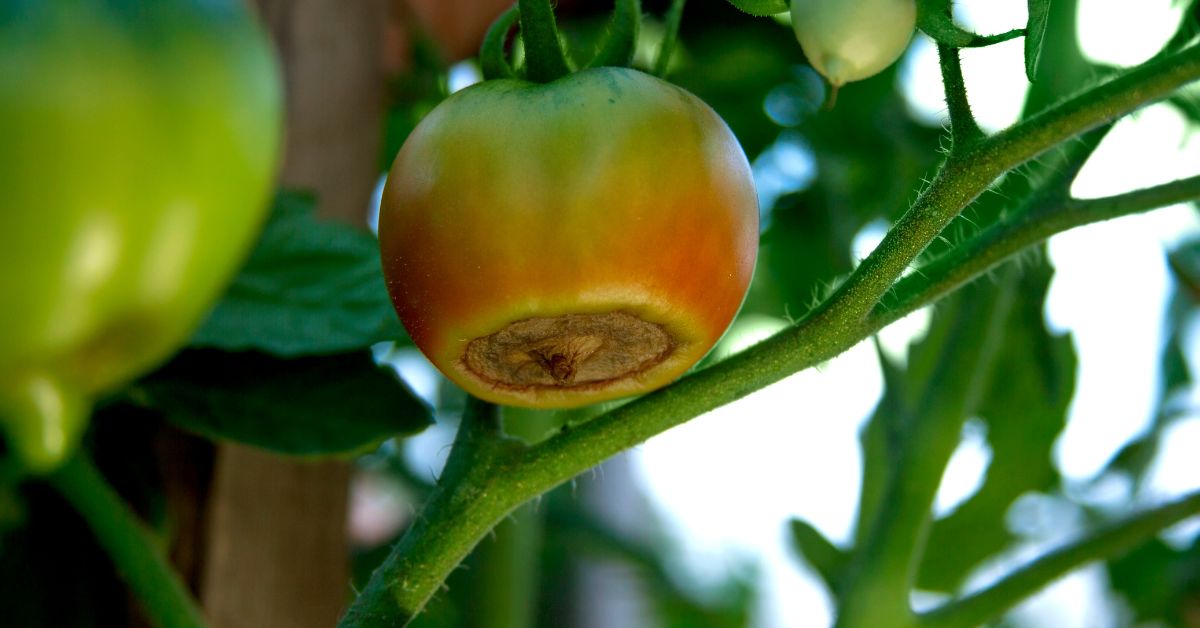
Easy Way to STOP Blossom End Rot
Like I said, blossom end rot is very common in the vegetable garden.
It affects a few of the main vegetable crop groups, especially nightshades.
So we’re going to cover what blossom end rot actually is, why it happens to your fruits, proven ways to prevent it, and how to save your harvest.
That being said, let’s get right into the quick and easy way to STOP blossom end rot.
Firstly, from now on, I will mostly be calling blossom end rot “BER.” I really don’t want to type out the whole name every time.
Products:
Save 10% on your first Burpee seed order using code BURPEE10
What Actually is Blossom End Rot?
Many gardeners seeing BER for the first time usually think it’s a disease. However, blossom end rot is a physiological disorder of certain plants’ fruits.
A physiological disorder is an irregularity in a plant’s normal physiological functions. It’s not caused by a pathogen, like a virus or bacteria.
Instead, these disorders are caused by abiotic (non-living) environmental factors, such as weather conditions, soil conditions, or something else.
BER occurs at the bottom of the fruit, or the blossom end. The flower is the blossom, so the fruit is the natural extension of the sexual organ of the plant, meaning it is the blossom end.
You’ll notice it if you look on the bottom of your fruit and you see soft, brown, and rotten spots. It can happen on unripe and ripe fruits.
What Causes Blossom End Rot?
Like I said, BER is a physiological disorder, meaning it’s not caused by a disease.
The short answer is that blossom end rot is caused by a calcium deficiency. But not necessarily because your soil doesn’t have enough calcium.
I know, it’s kind of confusing, but just stay with me.
Your soil could have all the calcium needed to grow perfect fruits, and then they will just get BER.
But there are a few other environmental reasons why your plants might not be getting enough calcium. So here is a list from most common to least common reasons:
Inconsistent watering
This is by far the most common cause of BER, so I’ll talk about it the most; pay attention.
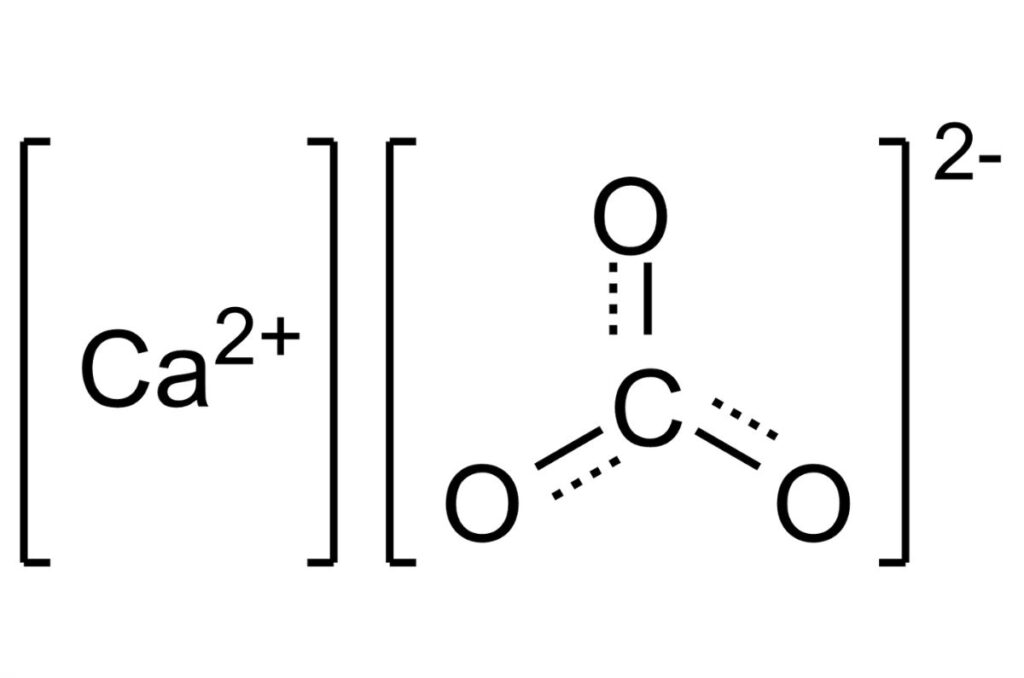
You see, calcium is always found in ionic compounds in the soil, especially calcium carbonate. If you know anything about chemistry, then you know that ionic compounds are incredibly soluble in water.
Calcium can only be absorbed by your plants if it’s dissolved in water. If it’s not fully dissolved, your plants will be deficient, even though it’s in the soil.
So if you water your plants inconsistently, then the dissolution rates will be fluctuating, and the calcium supply to your plants will fluctuate as well.
I know that’s a lot of complicated words, but that’s what causes BER.
Other Potential Causes
There are at least 3 other potential causes for BER, but they are not nearly as common:
- Root damage: Following the same logic, damaged roots won’t be able to take up calcium in the same way that healthy roots can. It’ll be inconsistent and sporadic, which can cause BER in your vegetable plants.
- Over-fertilization: Using too much nitrogen fertilizer (especially synthetic) causes rapid leafy growth. This can harm the development of the fruits on your plants, leading to an imbalance in calcium absorption. This can cause BER in the long run.
- Low calcium levels: This is extremely rare and almost never happens unless you’re growing in straight sand or something like that. Obviously, if there’s no calcium in the soil, then your plants can’t absorb it. If you’re concerned about it, then do a soil test to see how much of each nutrient your soil has.
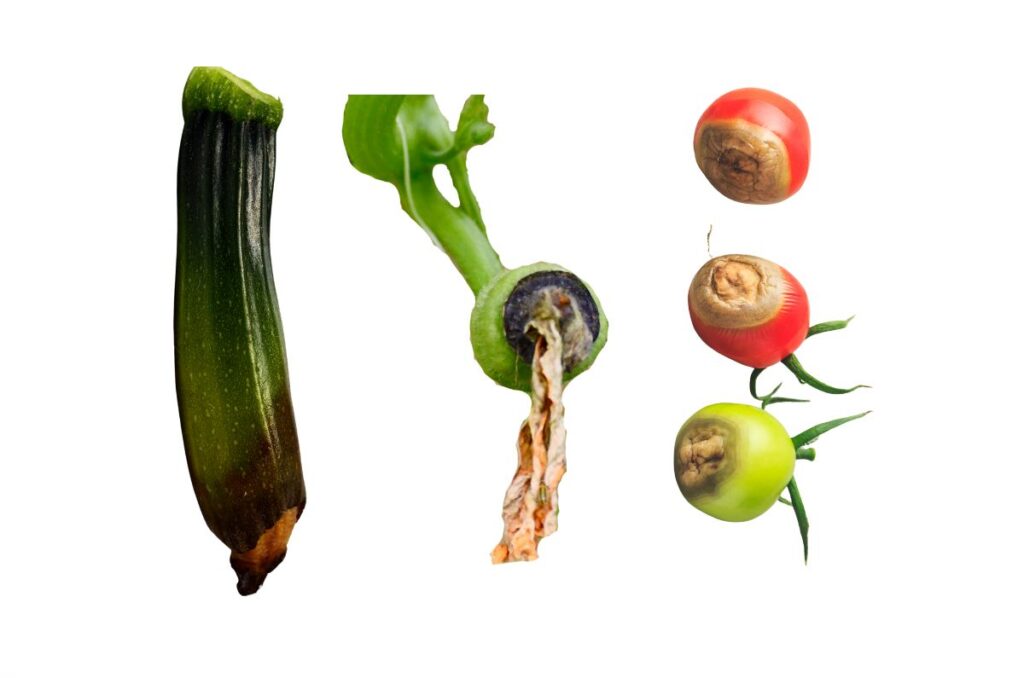
Which Plants Get Blossom End Rot?
BER can only happen with fruiting plants. If the plant doesn’t produce fruit as its harvest, then you won’t have to worry about BER.
But even within all the fruits, it really only happens with two main groups: nightshades and cucurbits.
Nightshades include peppers, eggplant, and tomatoes. Cucurbits include squash, pumpkins, and melons.
These are the most common fruits that get BER, but it can happen with others. I’ve heard of people getting BER with cucumbers, apples, and peaches, but it’s definitely pretty rare.
It’s not surprising at all that nightshades and cucurbits get BER a lot, especially considering that these plants are heavy feeders.
The fruits need a ton of calcium (dissolved in water) to stay healthy.
They need a lot of nutrients to produce healthy fruits, so if they don’t get it, then they won’t produce well.
Difference Between BER and Sunscald
A lot of gardeners think they have BER, they freak out for a little bit, but then it turns out to be sunscald. So here’s how to tell the difference.
BER is soft, brown, mushy. It’s like the fruit is rotting. If you cut one open, you’ll see that even the inside is soft and mushy. This is characteristic of BER.
Sunscald, on the other hand, mostly happens only with peppers, and it’s the opposite of BER. It’s still brown, but it’s not mushy or soft.
Instead, the skin usually becomes papery thin and sometimes crispy. If you cut one of the fruits open, you’ll see that the inside is pretty much not affected by the sunlight.
Additionally, sunscald usually only appears on the tops or sides of the fruits, while BER is always at the bottom.
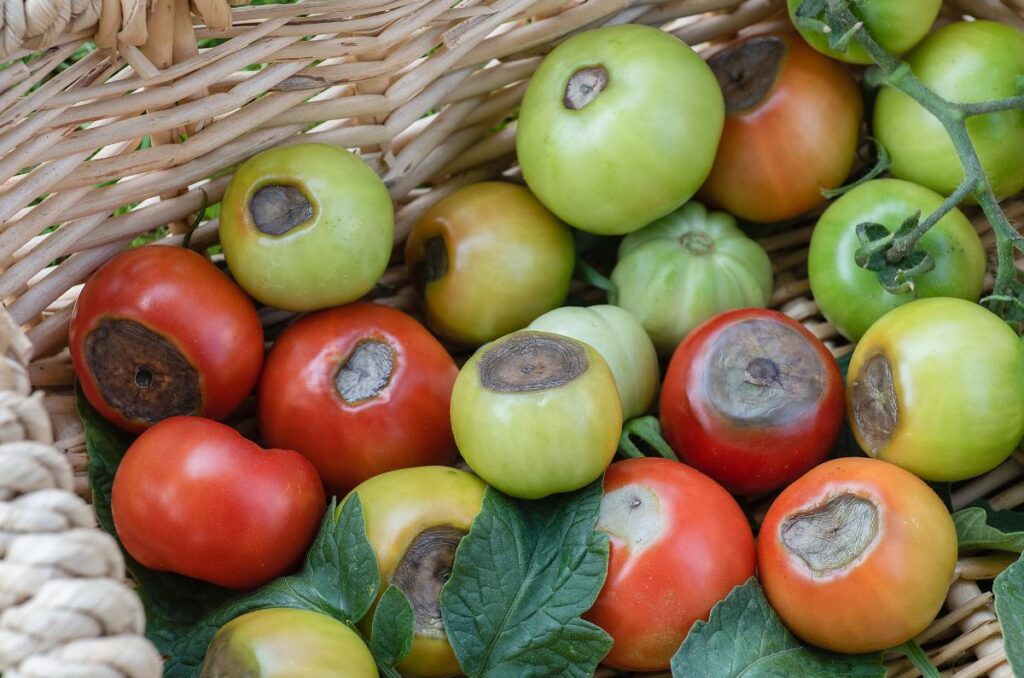
Soft, mushy, and on the bottom of the fruit → BER
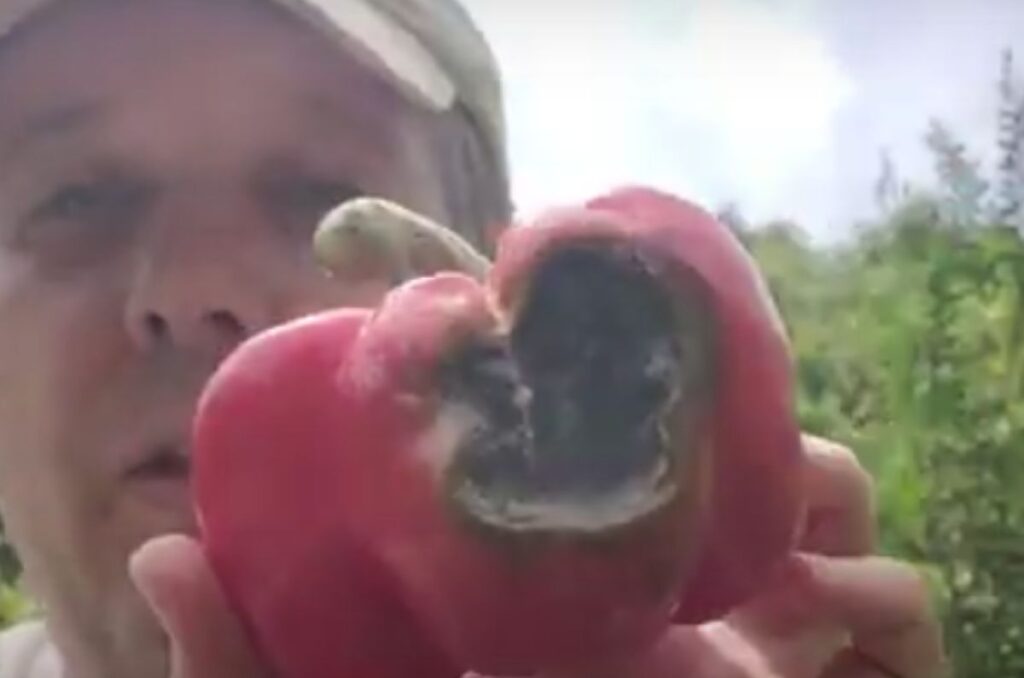
Thin, papery, and on the side of the fruit →sunscald
How to Stop Blossom End Rot
Here’s the best approach to fixing and preventing blossom end rot from destroying your tomato harvest:
Water Consistently
All of the plants most susceptible to BER are usually really big plants. Tomatoes, pumpkins, summer squash; all these plants need a lot of water to support all those large leaves.
But they also need lots of water for the hundreds of fruits that they’ll produce.
Like I said, calcium can’t be absorbed by your plants unless it’s dissolved in water. So make sure the soil doesn’t get dry.
A simple way to figure out when to water is to just stick your finger in the soil.
Bury your finger until the second knuckle. If the tip of your finger is still wet, then you don’t have to water. If the tip of your finger is bone dry, then you need to water.
Don’t let the soil dry out, don’t let the leaves wilt, don’t get BER.
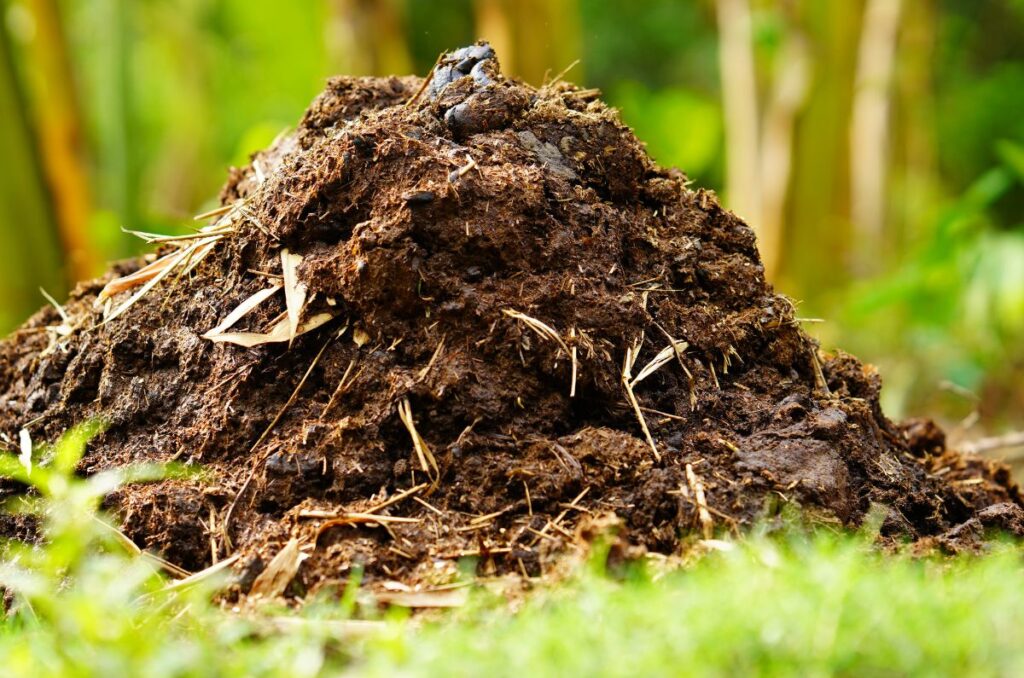
Add Organic Matter
Organic matter is no doubt the cornerstone of healthy soil. Microorganisms feed on organic matter, which makes the nutrients available to your plants.
Well-rotted compost or manure is the perfect organic matter for your soil.
Additionally, organic matter helps your soil to retain water. And as we know, moist soil is necessary to prevent BER.
This helps with the overall health of your soil, and therefore, your plants.
If your soil is healthy, then there’ll be lots of bioavailable calcium and it will move around your plants freely.
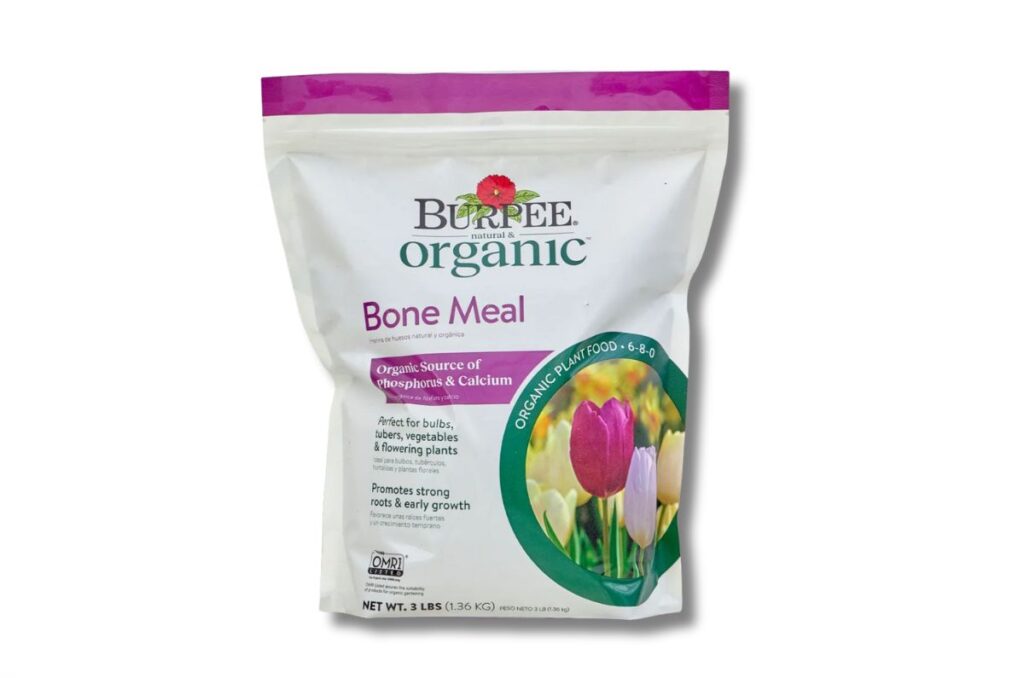
Use the Right High-Quality Fertilizer
High-nitrogen lawn fertilizer is not the best fertilizer for your fruiting vegetable crops.
This has way too much nitrogen to produce healthy fruits.
Additionally, these types of fertilizers are almost always synthetic, not organic. Synthetic fertilizers promote rapid leafy growth, not proper fruit development.
Instead, use an organic fertilizer specific for fruiting crops.
My favourite one is bone meal because it has lots of phosphorus and other micronutrients, like calcium and magnesium.
This fertilizer is perfect for fruiting crops.
Another good one is kelp fertilizer, which contains a wider spread of micronutrients like calcium, magnesium, iron, and copper.
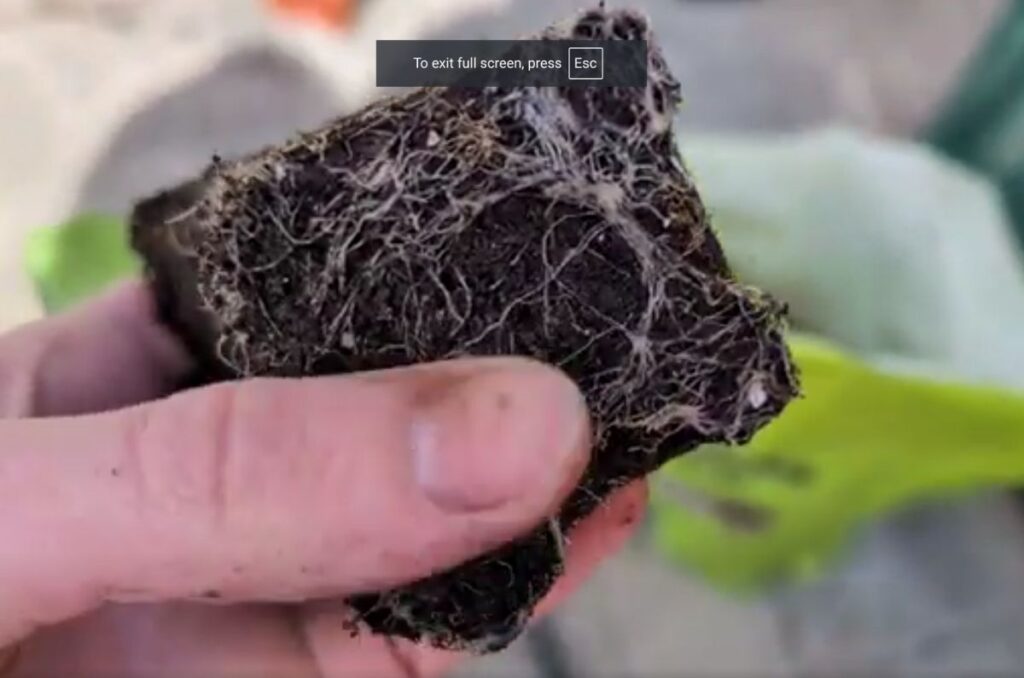
Don’t Disturb the Roots
Disturbed roots can inhibit your plants’ absorption of calcium.
Make sure you harden off your seedlings before transplanting to reduce transplant shock. This helps to acclimate your plants to the outdoor conditions before they actually go outside.
Additionally, planting other plants too close to your crops can disturb the roots. Give your plants proper spacing and make sure the roots have enough soil space to get access to water and nutrients.
Make sure to amend your clay soil and reduce any compaction as well.
Can You Fix BER Mid-Season?
Fruits that already have BER can’t be saved. They won’t revert back to normal if you water them properly.
And sometimes you won’t be able to tell if this is the case because it starts from the inside. It can take a while for the rot to spread to become visible.
So don’t try to fix fruits that already have BER, instead work to prevent it from happening again.
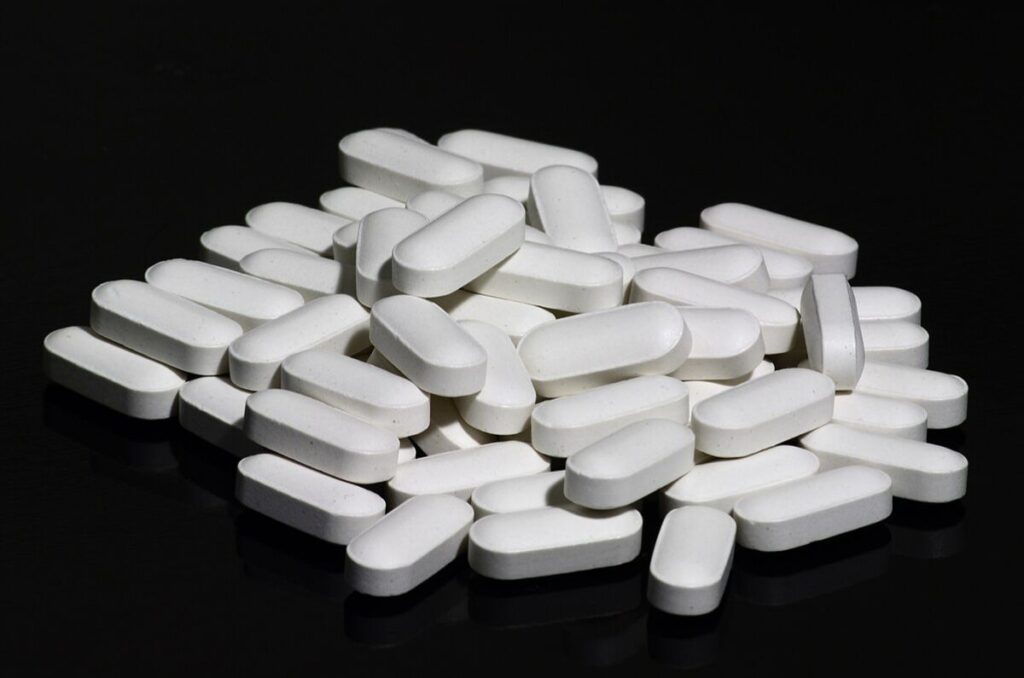
What Doesn’t Work Against Blossom End Rot
There’s a lot of bad advice out there for fixing BER. If you’re misinformed, then you might fall into their traps as well.
Here are some things that don’t work well to fix BER:
- Eggshells in the planting hole: Eggshells take way too long to break down to become bioavailable calcium for your plants in the same growing season. It can take several years for them to go from fresh eggshells to calcium, meaning it just won’t do anything.
- Antacids: Don’t make a weird face because some people actually say to use antacids. Yes, the active ingredient in antacids is almost always calcium carbonate, which is the best source of calcium for your plants. But it won’t fix a dissolution / uptake problem.
- Calcium sprays: Blossom end rot foliar sprays don’t really do anything. Again, BER is almost always caused by uneven watering. Overfeeding with a bunch of calcium won’t do it for you, so don’t waste your money on this junk.
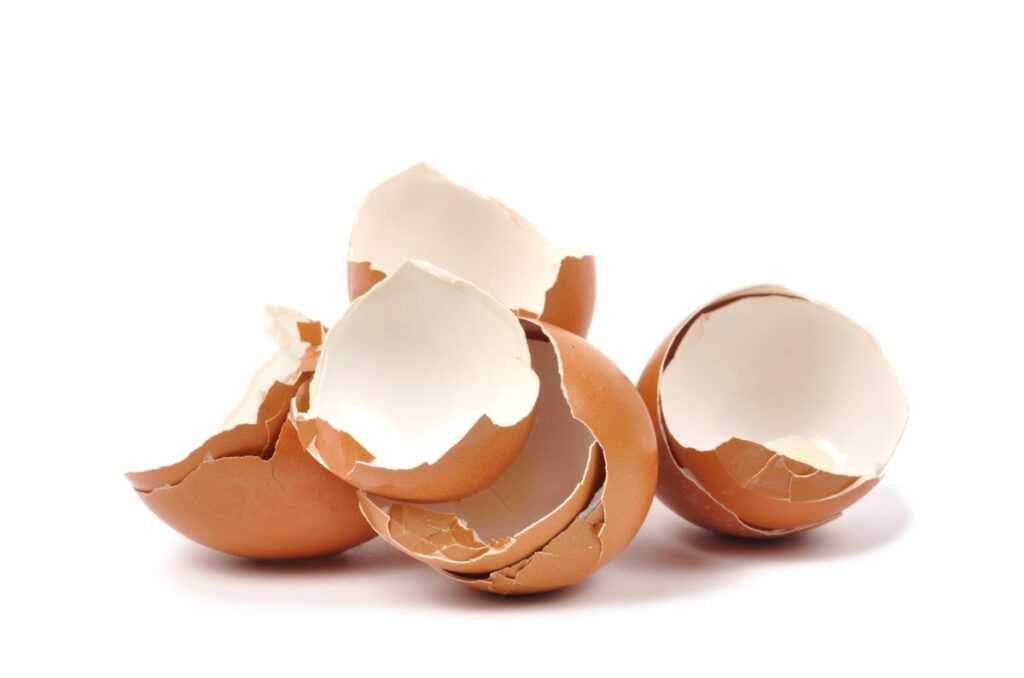
Let me go back to the thing about eggshells.
I’m not saying that you shouldn’t put eggshells in your garden, because you should; I do it all the time. Actually there’s a pile of eggshells from the winter waiting for me outside right now.
And I’m sure that by adding these eggshells I’m also adding calcium to my soil in the long run.
But the point is that it won’t happen in the same growing season.
So yes, use eggshells in your garden, in your compost, whatever. But don’t expect it to be some sort of magic fix for BER.
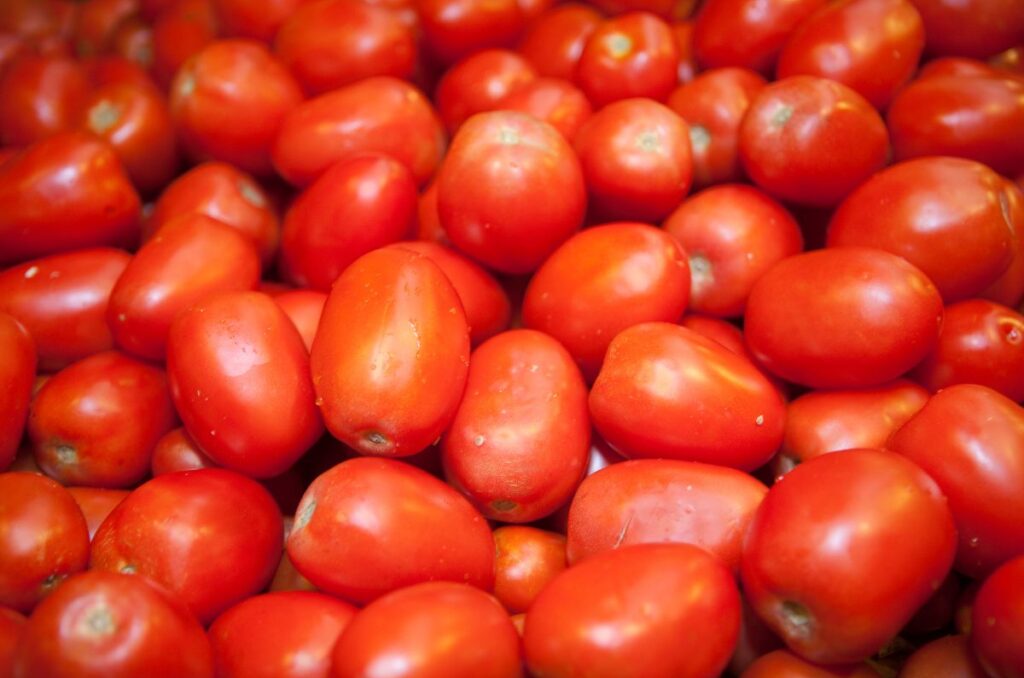
Varieties Most Susceptible to BER
Before I talk about BER-resistant vegetable varieties, let me first tell you which varieties are the most susceptible:
- Determinate tomatoes: These tomato varieties are by far the most susceptible to BER. The most likely cause of this is that they produce all their fruit at one time. This can cause a lot of stress for your plants, leading to significant water and calcium deficiencies.
- Heirloom varieties: With heirloom plants, they don’t have the same genetic makeup that some hybrids have. This makes them more prone to stress, stress damage, and blossom end rot. This includes any heirloom vegetable varieties.
- Large bell peppers: Large bell peppers need a lot of calcium and water to produce well. If they get even a little bit less than normal, then they will get BER very easily.
- Large zucchini varieties: Again, the same principles apply. Larger fruits are more prone to water and calcium deficiencies, simply because they need so much more of it.
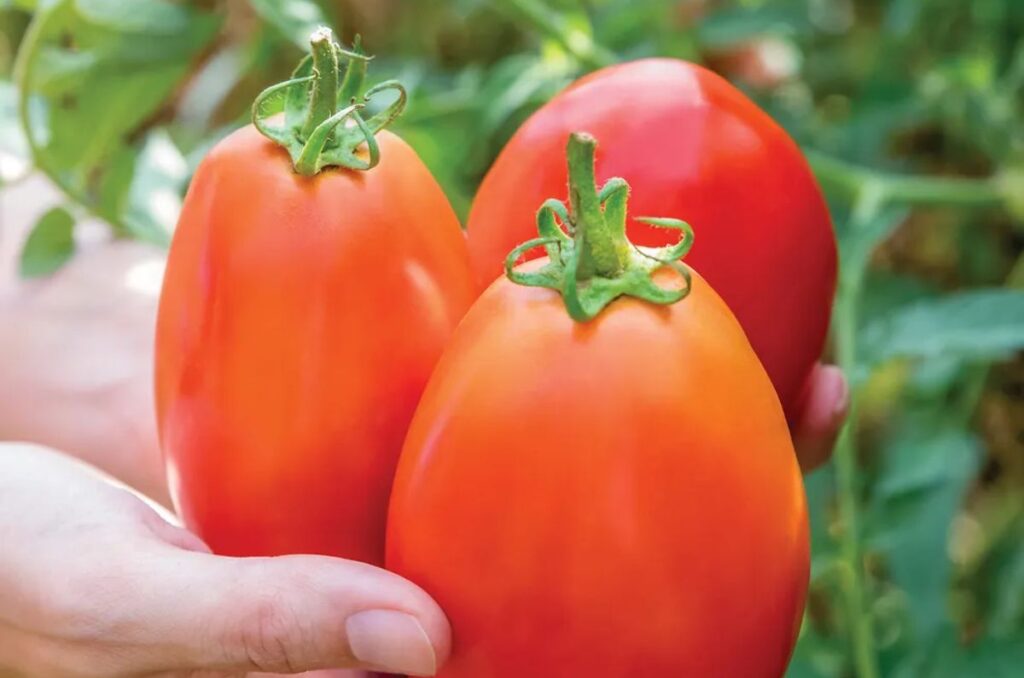
BER-Resistant Varieties
Here are some blossom end rot-resistant vegetable varieties:
- Cherry tomatoes: Cherry tomatoes are much smaller than other varieties. This means they don’t need as much water or calcium to produce good fruit, making them resistant to BER. I don’t think I’ve ever seen BER on my cherry tomatoes; it just doesn’t happen.
- Gladiator Hybrid tomato: This tomato is actually one of the few blossom end rot resistant tomatoes. It’s bred exactly for that reason and performs very well.
- Small-fruited peppers: Certain peppers produce very small fruits, such as Thai chili, tabasco, and sweet banana. The same logic follows from the cherry tomatoes; they don’t need as much water and calcium to produce good fruit.
- Winter squash: Although winter squash plants grow really fast, the fruits actually mature quite slowly. They don’t ripen as fast as summer squash, meaning they won’t be under as much nutrient deficiency stress.
Can You Eat Blossom End Rot Fruits?
Fruits with BER are completely safe to eat… as long as you remove the rotten part.
The part of the fruit that’s actually brown is not edible and you have to remove it.
If your fruits are not ripe yet and they have BER, then I’d say there’s no point to let them ripen and then remove the brown part.
It’s only worth removing it if the fruits are already ripe and you still want something.
Can Milk Fix Blossom End Rot?
This might sound weird at first but it’s a real thing; people actually do this.
The idea comes from the fact that BER is caused by a calcium deficiency, which is caused by uneven watering.
So they think, “what has calcium and water together?”
Naturally, some people come to the completely logical conclusion to use milk on their fruiting plants.
The problem with this is that milk curdles, especially in the summer when all of these crops are growing. And that will cause even more problems for your plants.
But then you can say well just dilute the milk. In that case, sure, there probably wouldn’t be anything bad that would happen, but there wouldn’t be anything good either.
Even if it does add some calcium, it’s milk. We buy milk to drink, not to pour in our gardens. Just use a fertilizer if you really want some calcium.
So leave the milk in your fridge and the fertilizer in the soil, and don’t try to swap them!
Frequently Asked Questions
I notice BER more on the early fruits rather than the late fruits. This might be because the plants are still stressed, so the first fruits are not going to be as good as the rest.
BER won’t go away on its own, the problem needs to be fixed. Additionally, fruits that already have BER won’t be able to recover from it, you’ll have to just discard those ones or cut the bad part off.
The idea is that inconsistent watering causes BER. By that logic, yes, periods of drought followed by overwatering, followed by drought, and so on, will cause BER.
You don’t need to specifically add calcium if you have healthy soil. Compost, manure, and organic fertilizers will have plenty of bioavailable calcium for your plants. Don’t go dumping a bunch of calcium fertilizer into your soil!
Even More Gardening Ideas
Here are a few more posts to get the ball rolling in your garden!
- 10 Delicious Sweet Pepper Varieties You NEED to Grow
- Best Organic Fertilizer for Vegetables that WORKS
- Compost vs. Manure: Which One’s Better for Your Garden?
If you liked this article, make sure to share it with your friends and family members who are also looking to sharpen their gardening skills. Also, consider signing up for our email newsletter; don’t worry, we won’t send you spam, just fresh gardening ideas every week!
If you want to learn more about vegetable gardening, make sure to check out what I’m doing on Facebook, YouTube, and Pinterest.
Pin this post for later:
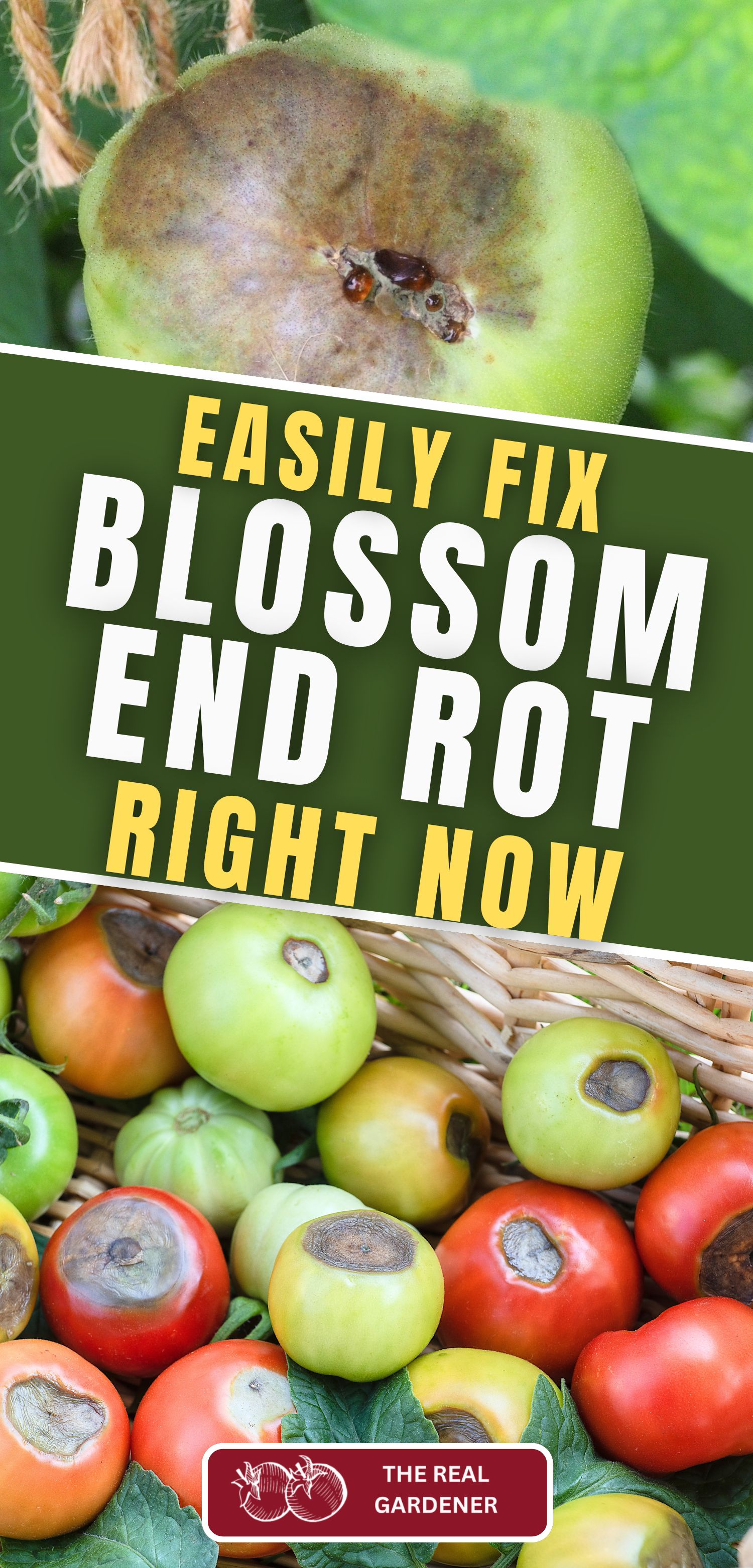
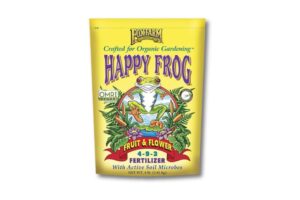
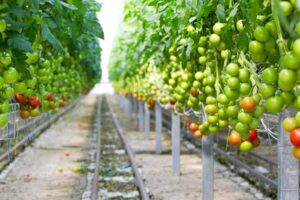
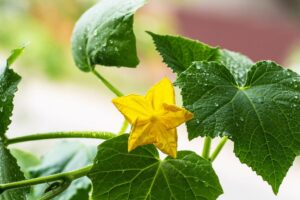
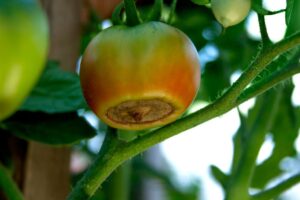
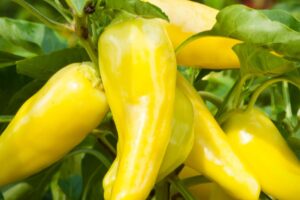
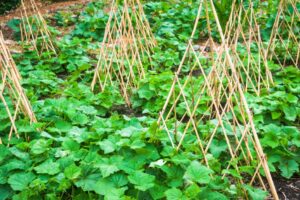

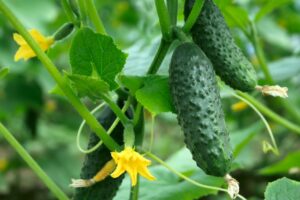
Leave a Reply